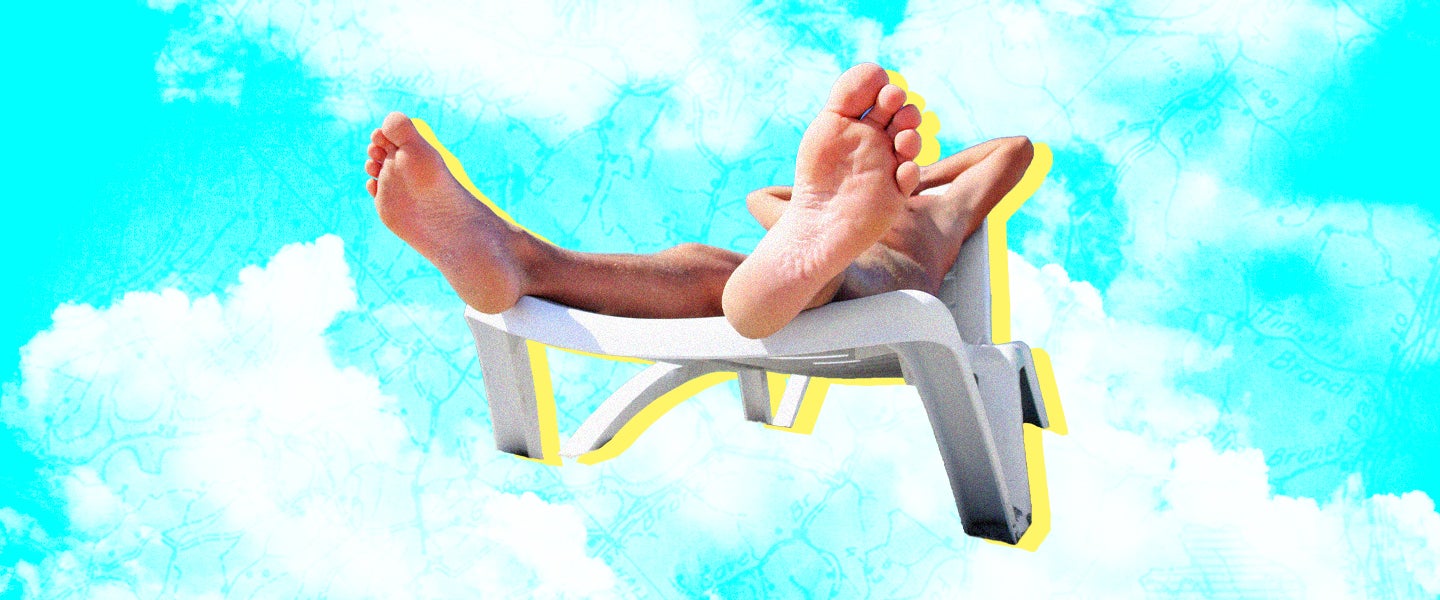If your skin is pale, you’ve no doubt been tempted by the sweet, seductive allure of a “base tan.” As in, just go without sunscreen for an hour or so to get a little color, man — it’ll keep you from getting sunburned, and it’ll make your ghostly self look less shockingly white. But is this really a thing? Can brief, unprotected exposure actually help protect you from further damage? Alongside Joyce Davis, a dermatologist in New York City, we’re going to find out.
The whole idea of a base tan seems… kinda logical?
It’s true that, in theory, a base tan will provide you with a bit of protection — that’s what a tan does, after all. In order to try and prevent damage from the sun’s UV rays, your skin produces pigment to protect itself. Think of it as a bodily stress response in which the result is you get a little darker, and thus, ever so slightly more resistant to sunburn.
How much protection are we really talking here?
Numerous articles, like this one from Harvard Medical School, claim that a base tan can provide sun protection equal to about 3 SPF, which as we discovered in our look at homemade sunscreens, is basically so low as to be almost useless. It does mean you might be able to stay in the sun three times longer than your un-base-tanned self could before burning (say, 45 minutes versus 15 minutes), but that’s not a lot, most experts conclude, especially compared to even the weakest sunblocks. Not to mention, you don’t even have to be burning before those UV rays become dangerous. “The feeling nowadays is there’s no such thing as a safe tan,” says Davis.
So there’s no world in which an expert would ever recommend one?
Welllll, Davis does, but only in limited cases. “I can tell you that for someone who’s extremely fair-skinned, who’s at risk of burning, sometimes we would recommend they could get a little tan [before going somewhere with much stronger sun] so that they don’t ruin a vacation with a bad sunburn,” says Davis. “The whole idea is to prevent a bad burn. If you wind up getting a bad burn where your skin blisters and you’re stuck on an island in a hotel room, it’s not like you can run to the local CVS store. The little gift shop in the hotel isn’t going to have everything you need.”
That sounded an awful lot like the dermatologist just said it was okay to tan!
Whoa! Slow down, damn it. This is only for very limited cases — like, really pale people going somewhere much hotter than their usual climate, who don’t want to spend their big Caribbean vacation in a feverish haze of sweat and blistered skin. It’s not meant to be everyday advice.
“Nowadays we have sunblocks in SPF 50 or 100, we have sprays, lotions, cans that spray it in every direction, so we can pretty much block the sun,” says Davis. “I’d also recommend a wide-brimmed hat — not a baseball cap.” This, then, is what you should be doing: Protecting yourself from the sun altogether, not trying to cheat your way through it.
What about if I did it with a tanning bed instead of, like, the sun?
Hell no. Tanning beds are pretty much verboten among dermatologists. Davis points out that the American Academy of Dermatology says that using indoor tanning beds before age 35 increases your risk of melanoma by 59 percent — and the risk increases with every use.
Okay, fine. But what about if you’re not super pale to start with? Does a base tan serve any purpose then?
According to Davis, someone who’s not Caucasian already has a base tan, in a sense: “They can still burn, but they’re less likely to do so,” she says. Nevertheless, those with darker complexions still need to protect their skin. “When we find melanomas in black-skinned people, it’s usually in areas not protected by pigment, like the fingertips, palms and soles,” says Davis.
This, in fact, is how Bob Marley died: Skin cancer, on his toe, under the nail. He was only 36, too — this really can happen to anyone. Davis says the Tuff Gong himself actually appears in a lot of dermatology lectures for that very reason — as a reminder that darker-skinned people are vulnerable to melanoma as well.
All in all, it sounds like the base tan is sort of a thing, but not a thing we should actually do, correct?
Basically, yeah — it shouldn’t be an everyday event. If you must get one, think of it as a special occasion thing — something that’ll allow you to enjoy your vacation a bit more and stress a bit less as you endure the sun’s stronger UV rays at tropical latitudes.
Just don’t fuck it up and fry yourself before you leave, or that flight’s going to be even more painful than usual.

